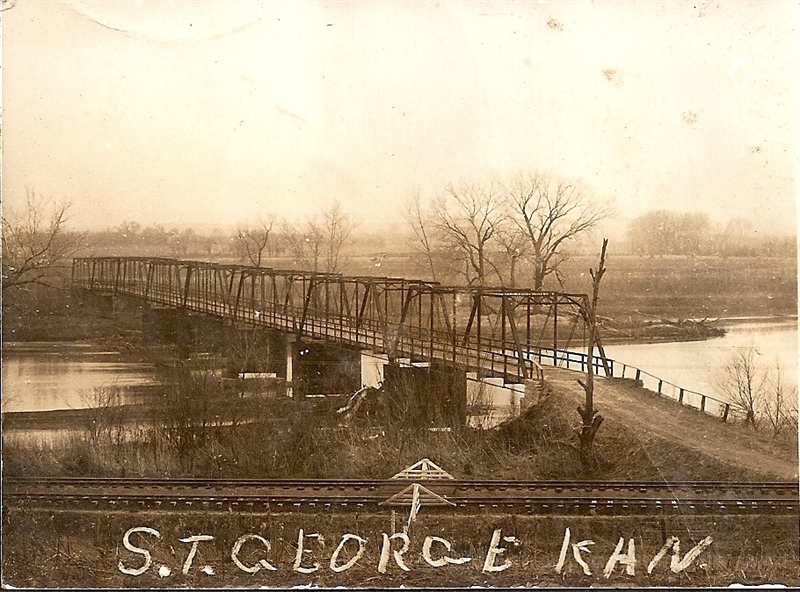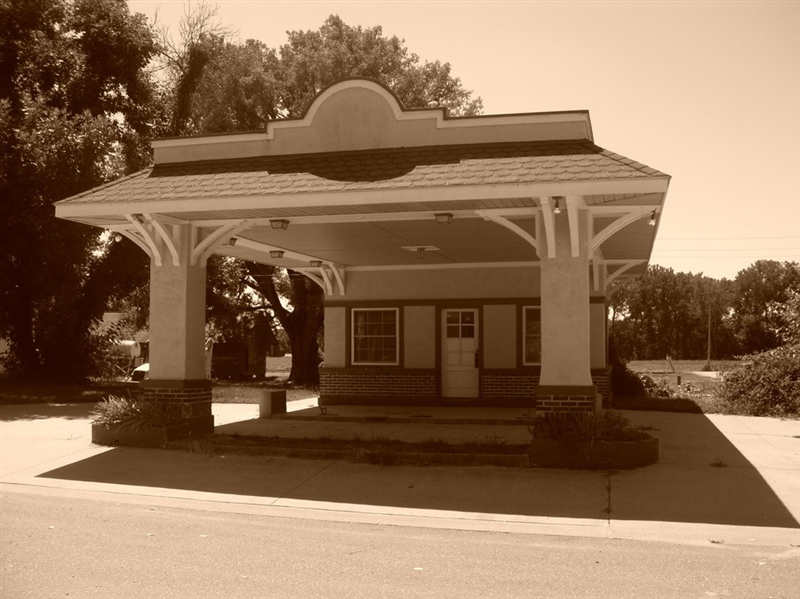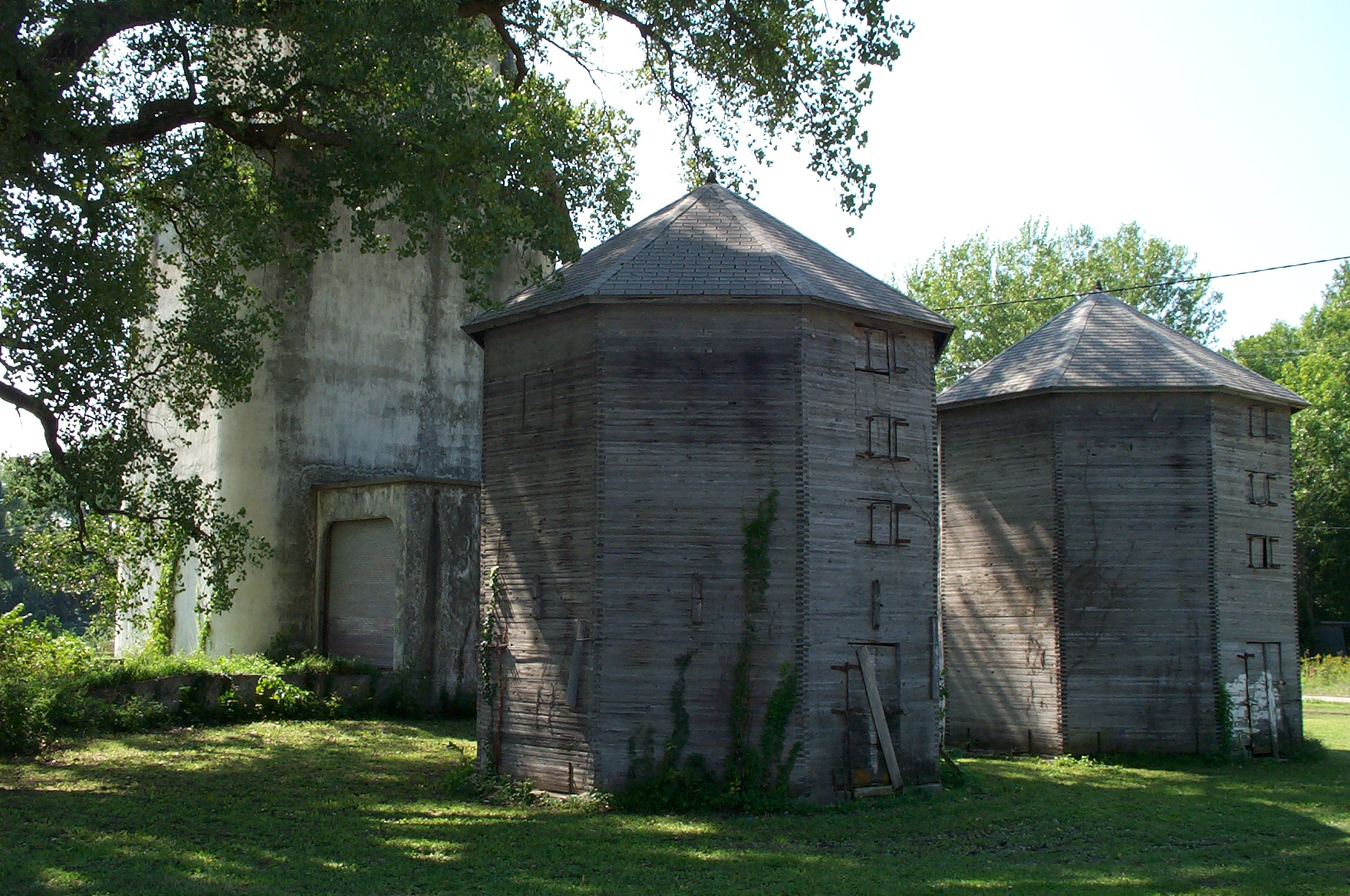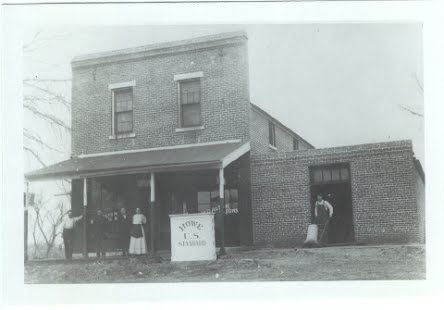The small town of St. George is located seven miles east of Manhattan, in Pottawatomie County. Its current population is around 500, and it continues to grow. Black Jack Creek forms the west boundary and on the east is Blood Creek
The settling of St. George can be told by two different accounts. In April 1855, a group of settlers headed for California in search of gold camped in our general area. Among these emigrants was the George W. Gillaspie family, J. George Gillaspie, and the George Chapman family. Rumor has it that after reaching the area, Mrs. Gillaspie refused to go any further, and so the three families decided to homestead in Kansas, at this very spot. The two Gillaspie families located on the south of the Kansas River, and the Chapman family on the north side (where St. George is currently located). Mr. Chapman’s nickname was “The Saint,” and with all the Georges around, they chose to name the place St. George. The other story of St. George’s settlement claims that the Gillaspie families received a land grant from the government from the War of 1812, they moved here in 1855, and that the town was named in 1857 in honor of George Chapman. His death was the first in St. George.
The first Pottawatomie County Court House was erected in St. George by August Becker in 1857. He served as Justice of the Peace and postmaster.
In 1859, the first school was organized. It was a small building made of cottonwood, with 25-30 pupils in attendance the first year. In 1908, a brick building replaced the wooden school, housing both a grade and 2-year high school. On September 18, 1919, it became a four-year high school.
In 1866, the Kansas Pacific Railroad, now called the Union Pacific, came through St. George. The St. George Depot was built in 1868, and the trains made regular stops day and night.
By 1906 St. George had its first telephone service. It was locally operated until 1963, when Wamego bought it. The St. George Bank was also chartered in 1906. It still stands on First Street and is now home to Konza Kayaks.
By March of 1912, the businesses in town included two General Stores (the first one was built in 1861), the bank, a lumber yard, two blacksmith shops, a hardware store, hotel, restaurant, a livery stable, and others. Electricity came to the city in 1912, and this prompted the building of the Opera House, which later became the seed company. The building was torn down some years ago, and a new building now stands in the lot.
An elevator was constructed in 1879, and in 1915 the current elevator was constructed by William Dalton. Later, during the 1920’s the 8-sided wooden silos were constructed to store grain, corn, and other dry goods. Today, they are the last wooden silos in the state of Kansas.
Highway 40 was laid down through St. George in 1928 and was paved by 1930 being one of the first highways to have a permanent hard surface.
During the Flood of 1951, the bridge connecting St. George and Zeandale was washed away, and was never rebuilt. However, you can still see the bridge piers in the river.
In 1976, during the bicentennial, the town underwent a makeover. The side of the general store (which was still operational then) was painted by students from the high school. The mural was redone and updated later by community members and volunteers from K-State.
The flood of ’93 brought the community together, and many hours of labor filling sandbags helped keep the town safe. Water reached the blacksmith shop but never made it past First Street, which couldn’t be said for the Flood of 1951.
New developers are coming in every day and building houses and businesses. In the fall of 2008 the elementary school moved into their new location at the corner of Military Trail Rd. and Blackjack Rd.



.jpg)
